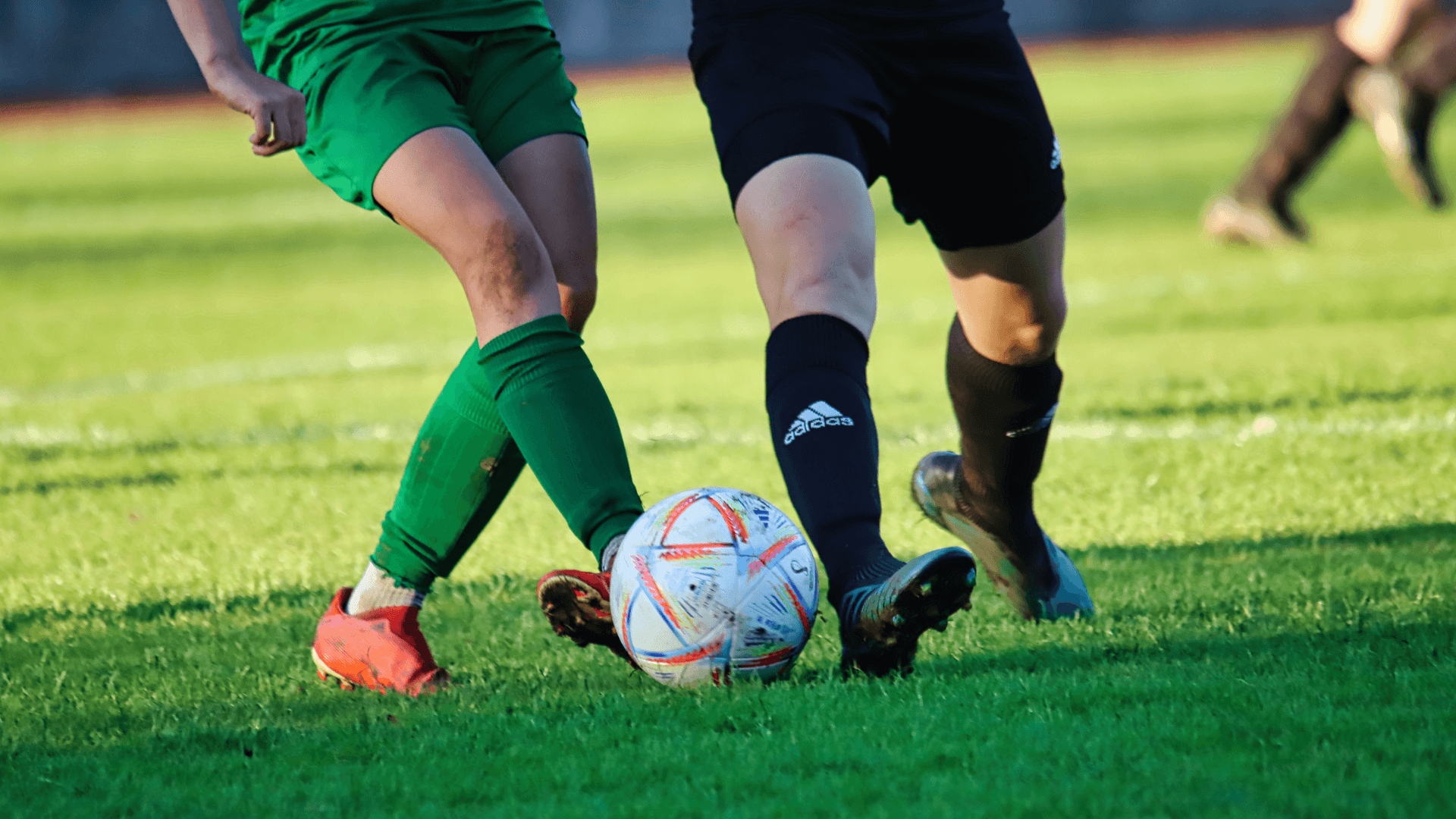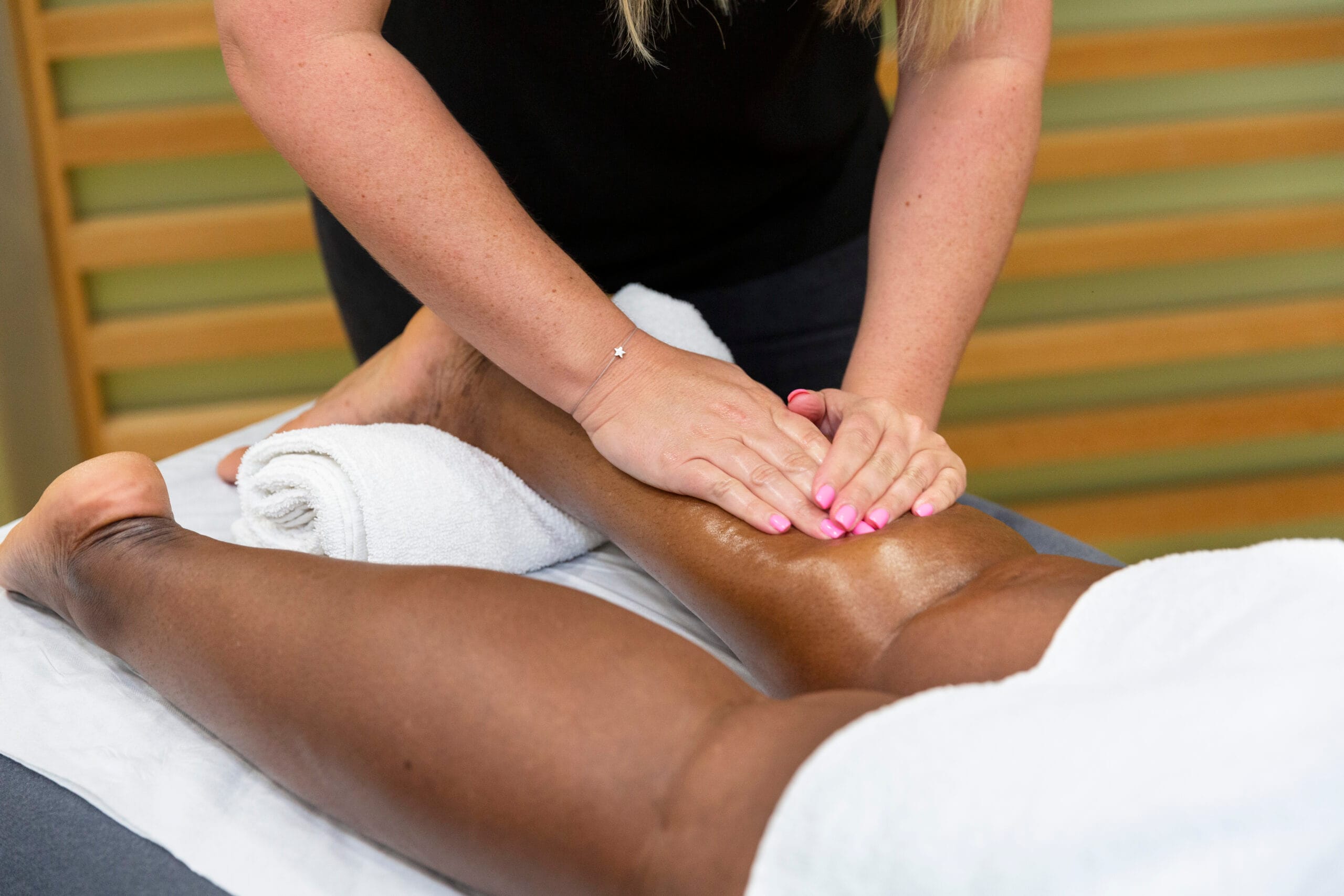How Soft Tissue Therapy Can Help The ‘Pain’ of Football Training

Pure Sports Medicine
- 6 July, 2022
- Soft Tissue Therapy
- Football
- 3 min read
How Soft Tissue Therapy Can Help The ‘Pain’ of Football Training
No matter what level you play at, you know football training means running, running and more running.
Whether it’s endless laps of the pitch, shuttle runs, or high intensity interval training, you are pushing your body to the limit both physically and mentally. It’s, therefore, really important to minimise your recovery time by maintaining your flexibility and getting adequate rest and hydration. Receiving regular Soft Tissue Therapy can help speed up your recovery between training sessions and give you the edge on the pitch by maximising your performance.
One of the pains (literally) of training following a break is the muscle tenderness and stiffness that normally develops 24-72 hours after completing a session (DOMS – Delayed Onset Muscle Soreness). DOMS is thought to be caused by an inflammatory response to small micro-tears within muscle fibres following harder than normal training sessions, especially involving muscle fibres lengthening under load (eccentric). Soft Tissue Therapy has been shown to alleviate the symptoms of DOMS(1, 2), reduce the swelling associated with high intensity eccentric exercise(3) and have positive psychological effects post-exercise (4,5), thus offering the potential for reduced recovery time.
Feeling fresher sooner during a heavy training block should mean that not only are you available for more training sessions but also that you are able to push yourself harder during these sessions. If training appropriately, this should mean that you become stronger and quicker, translating into improved performance. It has also been shown that a higher participation in training sessions reduces your risk of injury during matches.

Soft Tissue Therapy is not just about recovery, it can also be an aid to increase performance and reduce the risk of injury. Most players are more dominant on one side than the other, which can sometimes lead to greater muscle development with increased strength in the preferred leg. This imbalance can sometimes have detrimental effects on flexibility, range of motion, performance and technical skill, as well as increase the risk of injury (6).
Whilst the role of screening in injury prevention is a controversial topic, pre-season is a good time to work on those areas that have either been injured previously and/or lack the desired flexibility to feel comfortable out on the pitch. Hips and groin are common areas in which footballers lack mobility, but ankles, hamstrings and the lumbar spine are other areas that benefit from having improved flexibility.
Soft Tissue Therapy can help improve your range of movement by relaxing over stressed muscles and releasing restricted fascial barriers, thus helping to reduce imbalance and reduce injury risk.
Book a treatment with one of our expert Therapists to see how we can help take your game to the next level.
References:
- Hilbert, J. E., Sforzo, G. A. and Swensen, T. (2003) The Effects of massage on delayed onset muscle soreness, British Journal of Sports Medicine, 37(1), pp.72-75
- Farr, T., Nottle, C., Nosaka, K. and Sacco, P. (2002) The effects of therapeutic massage on delayed onset muscle soreness and muscle function following downhill walking, Journal of Science and Medicine in Sport, 5(4), pp.297-306
- Zainuddin, Z., Newton, M., Sacco, P. and Nosaka, K. (2005) Effects of Massage on Delayed-Onset Muscle Soreness, Swelling, and Recovery of Muscle Function, Journal of Athletic Training, 40(3), pp.174-80
- Nunes, G. S., Bender, P.U., de Menezes, F. S., Yamashitafuji, I. and Wageck, B. (2016) Massage therapy decreases pain and perceived fatigue after long-distance Ironman triathlon: a randomised trial, 62(2), pp.83-8
- Hemming, B., Smith, M., Graydon, J. and Dyson, R. (2000) Effects of massage on physiological restoration, perceived recovery, and repeated sports performance, British Journal of Sports Medicine, 34(2), pp.109-115
- Mendiguchia, J., Alentorn-Geli, E., Idoate, F. and Myer, G. D. (2013) Rectus femoris muscle injuries in football: a clinically relevant review of mechanisms of injury, risk factors and preventive strategies, 47(6), pp.359-366

Advice
Over the last 20+ years our experts have helped more than 100,000 patients, but we don’t stop there. We also like to share our knowledge and insight to help people lead healthier lives, and here you will find our extensive library of advice on a variety of topics to help you do the same.
OUR ADVICE HUBS See all Advice Hubs

